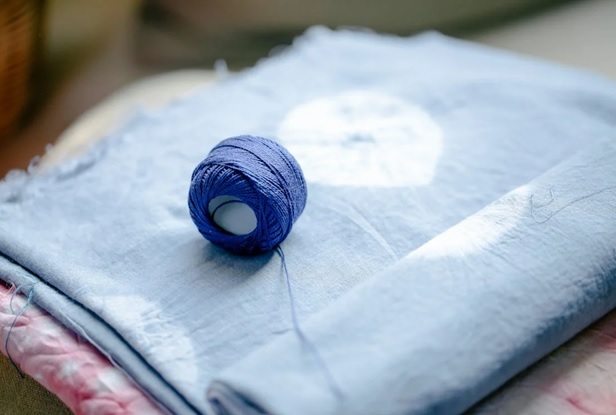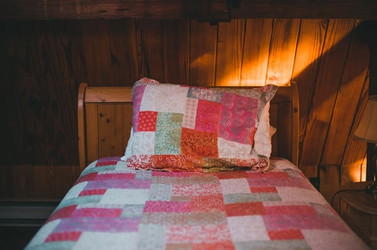Types of Quilting Fabrics You Should Consider for Your Project
27th Feb 2025
Quilting is an art that requires not just skill and patience, but also a keen eye for fabric selection. If you’ve ever met a quilter struggling to put together the right fabrics to create that perfect quilt, you know how essential it is to understand the different types of quilting fabrics available.
It’s essential for any quilter to know the various fabrics to consider when starting any quilting project. These tips will help you choose the best materials to bring your quilt vision to life.
Cotton Fabrics: The Quilter’s Favorite
Cotton fabric is the most popular choice among quilters for several reasons. It is versatile, available in countless patterns and colors, and easy to work with. Cotton is breathable, durable, and machine washable, making it perfect for quilts that will be used frequently.
When selecting cotton fabrics, consider the thread count and weight. A higher thread count will yield a softer fabric, while heavier cotton can add stability to your quilt. Here are the most popular quilting fabrics:
- Quilting Cotton
This is specially designed for quilting, available in a variety of weights, prints, and colors.
- Muslin
A plain woven cotton fabric often used for the quilt backing or as a test fabric for your designs.
- Batiks
These are hand-dyed fabrics that offer vibrant colors and unique patterns. Batiks are popular for their rich texture and depth.
Specialty Fabrics: Adding Unique Textures
Various specialty fabrics can enhance your quilt's appearance and feel. Incorporating different textures and materials can create visual interest and depth. Some of these specialty fabrics include:
- Flannel
Soft and cozy, flannel is perfect for making quilts that are warm and inviting. It’s an excellent choice for winter quilts.
- Satin and Silk
These luxurious fabrics can add a touch of elegance and sophistication to your quilts. However, they can be more challenging to work with due to their slippery nature.
- Chenille
This fabric has a unique texture that can add dimension to your quilt. It is often used for baby quilts for its softness.

Solids vs. Prints: Finding the Right Balance
When selecting fabrics for your quilt, you will often have to choose between solid fabrics and printed fabrics. Each type has its advantages, and striking a balance between them is crucial for achieving your desired look. For solid colors, do the following:
Complement Prints
Solid fabrics can serve as a perfect backdrop to vibrant printed fabrics, allowing them to shine. They can also be used to break up busy prints and create a more cohesive design.
Create Contrast
Solid colors can provide contrast in your quilt, making patterns pop and enhancing the overall aesthetic.
When using prints, you can do the following for your fabrics:
Add Visual Interest
Printed fabrics can introduce complexity and charm to your quilt. They can tell a story and evoke emotions, making your quilt more than just a decorative piece.
Create Themes
You can use prints to create a specific theme or mood in your quilt, whether it’s floral, geometric, or abstract.
Color Theory: Understanding the Impact of Colors
Selecting the right colors for your quilt is as important as choosing the fabric type. Color theory can help you make informed decisions about your fabric selections. You could consider the following color schemes:
- Monochromatic
Using various shades of a single color can create a soothing, harmonious quilt.
- Analogous
This scheme involves using colors that are next to each other on the color wheel. It provides a cohesive look while adding visual interest.
- Complementary
Using colors opposite each other on the color wheel can create striking contrasts and a dynamic appearance.
Scale Matters: Choosing the Right Print Sizes
The scale of prints can dramatically affect the overall look of your quilt. When selecting fabrics, pay attention to the scale of the prints.
- Large Prints
These are bold and make a statement but can be overwhelming if not balanced with smaller prints or solids.
- Medium Prints
These can serve as a bridge between large and small prints, making them versatile choices for a variety of quilt patterns.
- Small Prints
These can act as a filler fabric that adds texture without drawing too much attention away from larger prints.
Fabrics for the Backing and Batting
When planning your quilt, don’t forget about the backing and batting. The backing fabric provides the quilt’s reverse side and can be a chance to add more color or patterns without overwhelming the front. Consider the following for your backing fabric:
- Cotton
This is the most common choice for quilt backing. It’s durable and comfortable.
- Widebacks
These are specially made backing fabrics that are wider than standard fabrics, minimizing the number of seams needed.
Consider the following fabrics when it comes to your batting:
- Cotton Batting
This is breathable and offers warmth, making it ideal for most quilts.
- Polyester Batting
This type is lightweight and adds loft, making it suitable for quilts that will be used heavily.
How to Select Your Quilting Fabrics
Choosing the right fabrics might seem like a challenge, but trusting your instincts is key. Here are some tips to help you in the selection process:
Compare and Buy Fabrics Together
Always bring multiple fabrics together and see how they look against each other. This helps in visualizing the final quilt.
Use a Color Wheel
Having a color wheel handy can help you understand color relationships and make better choices.
Use Sample Swatches
Don’t hesitate to take home swatches to see how they look in different lights and settings.

Get Your Fabrics at Premier Stitching
Selecting the right quilting fabrics is an art form in itself. You need to understand the different types of fabrics available, their characteristics, and how they interact with one another. You can create stunning quilts that are not only visually appealing but also filled with personal meaning, especially when you purchase your fabrics at Premier Stitching.
We know and understand what quilters need and look for, and we help you enjoy the process through our many offerings of supplies, equipment, and notions you need for quilting fabrics!



